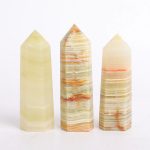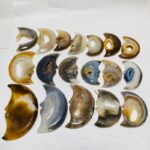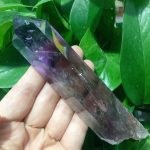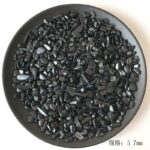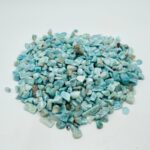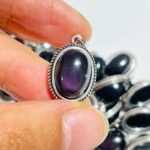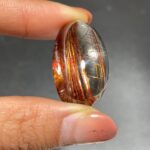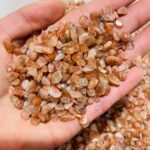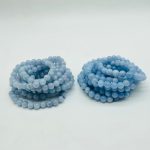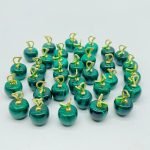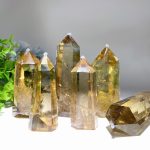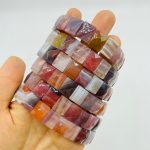Introduction
Ruby crystals, with their vibrant red hue, have captivated civilizations for centuries. Steeped in history, mythology, and symbolism, these precious stones hold a unique allure that endures to this day.

Characteristics
-
Color: Ruby crystals owe their distinctive red color to the presence of chromium impurities within their corundum structure. The intensity and shade of red vary depending on the chromium concentration.
-
Clarity: Ruby crystals, like all gemstones, exhibit varying degrees of clarity. The most prized rubies possess high clarity, with minimal inclusions or imperfections visible to the naked eye.
-
Carat: Carat weight is a measure of the size of a ruby crystal. One carat equals 200 milligrams. Larger ruby crystals are generally more valuable than smaller ones.
-
Cut: The cut of a ruby crystal significantly influences its brilliance and fire. Skilled artisans employ precision cutting techniques to maximize the stone’s light refraction and reflection.
History and Symbolism
Rubies have a rich historical and cultural significance. In ancient times, they were believed to possess mystical powers and were often used in jewelry and talismans.
-
Ancient Civilizations: In ancient Egypt, rubies were associated with the sun god, Ra. They were also revered by the ancient Greeks and Romans, who believed they bestowed courage and protection.
-
Medieval Europe: During the Middle Ages, rubies were prized by royalty and nobility. They were often incorporated into crowns, scepters, and other ceremonial objects.
-
Modern Symbolism: In modern times, rubies symbolize love, passion, and devotion. They are commonly used in engagement rings and other romantic jewelry.
Ruby Crystals VS Diamonds
While both ruby crystals and diamonds are highly valued gemstones, they possess distinct characteristics and applications.
| Feature | Ruby Crystals | Diamonds |
|---|---|---|
| Color | Red | Colorless, pink, yellow, etc. |
| Hardness | 9 on Mohs scale | 10 on Mohs scale |
| Clarity | Varies | Typically high |
| Sparkle | Brilliant | Exceptional brilliance |
| Value | Highly valuable, especially for larger carat weights | More valuable overall |
| Applications | Jewelry, talismans, lasers | Jewelry, industrial tools, cutting instruments |
Applications
Ruby crystals have found their way into a diverse range of applications due to their unique properties.
-
Jewelry: Rubies are primarily used in fine jewelry, captivating with their vibrant red color and captivating brilliance.
-
Lasers: Rubies are a key component in solid-state lasers, emitting a highly focused and intense beam of light. These lasers have applications in medicine, telecommunications, and scientific research.
-
Medical Imaging: Rubies are used in medical imaging to create high-resolution images of the cardiovascular system.
-
Novel Applications: A newly coined term, “rubymatics,” describes the emerging field that explores novel applications of ruby crystals in areas such as energy storage, quantum computing, and biomedicine.
Market Insights
The global ruby crystals market is projected to reach $12.5 billion by 2025, driven by increasing demand for colored gemstones and the growing popularity of lasers.
-
Key Market Drivers: Rising consumer spending on luxury goods, increasing investment in laser technologies, and expanding healthcare applications.
-
Pain Points: Limited availability of high-quality ruby crystals, concerns about ethical sourcing, and competition from synthetic gemstones.
-
Growth Opportunities: Innovation in laser applications, expansion into new market segments, and partnerships with ethical mining companies.
Benefits of Ruby Crystals
-
Exceptional Beauty: Ruby crystals’ vibrant red color and brilliant sparkle make them highly desirable for jewelry.
-
Symbolism and Meaning: The historical and cultural significance of rubies adds emotional depth and symbolism to jewelry pieces and talismans.
-
Versatility in Applications: Ruby crystals’ unique characteristics and properties make them suitable for a wide range of applications, including jewelry, lasers, and medical imaging.
-
Investment Value: Ruby crystals are highly valuable and hold their value over time, making them a sound investment.
-
Rarer Than Diamonds: Rubies are significantly rarer than diamonds, increasing their exclusivity and desirability.
Conclusion
Ruby crystals, with their stunning beauty and diverse applications, have captivated civilizations throughout history. While they bear similarities to diamonds, their unique properties and cultural significance set them apart. As the global market for ruby crystals expands, their allure will undoubtedly endure for generations to come.
Appendix
Table 1: Ruby Crystal Characteristics
| Characteristic | Value |
|---|---|
| Chemical Composition | Aluminum Oxide (Corundum) |
| Color | Red (Chromium Impurities) |
| Hardness | 9 on Mohs Scale |
| Specific Gravity | 4.00 – 4.10 |
| Refractive Index | 1.762 – 1.770 |
Table 2: Ruby Crystal Mining Locations
| Region | Key Mining Areas |
|---|---|
| Asia | Myanmar, Sri Lanka, Thailand |
| Africa | Tanzania, Mozambique, Kenya |
| Americas | Brazil, Greenland, United States |
Table 3: Ruby Crystal Treatment Methods
| Method | Purpose |
|---|---|
| Heat Treatment | Enhances color and clarity |
| Diffusion Treatment | Alters color |
| Cavity Filling | Repairs fractures |
Table 4: Ruby Crystal Applications by Industry
| Industry | Application |
|---|---|
| Jewelry | Rings, necklaces, earrings |
| Lasers | Solid-state lasers |
| Medical Imaging | Cardiovascular imaging |
| Industrial | Cutting tools, grinding wheels |
| Research | Materials science, quantum computing |










